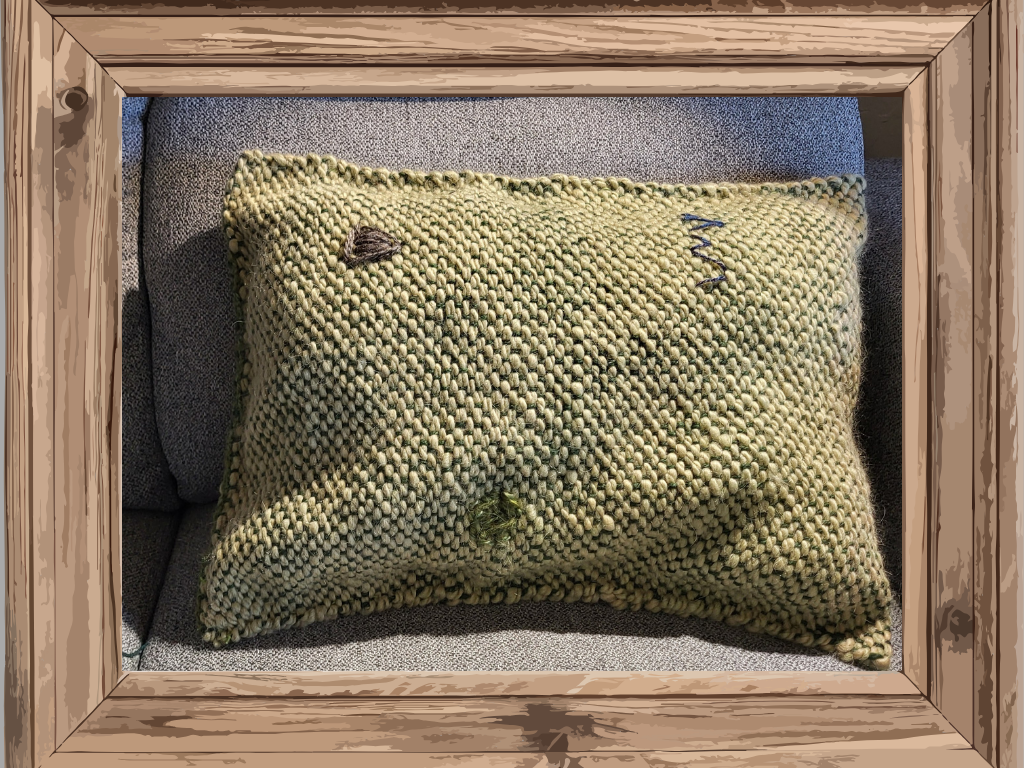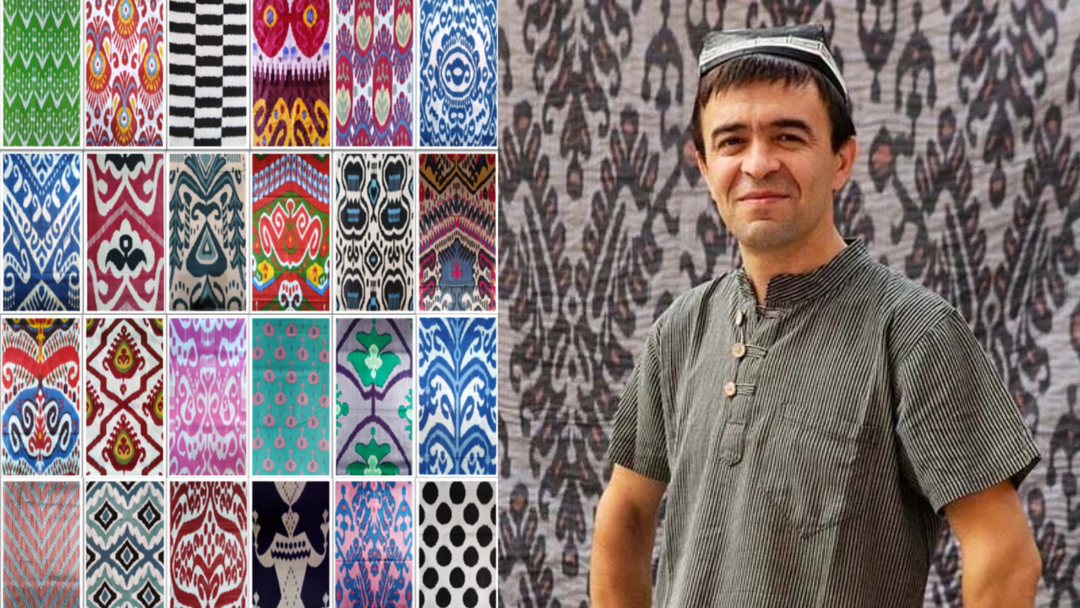Have you ever had one of those magical out-of-the-blue connections that really makes you believe in the butterfly effect?
A few weeks back, I received an email from Joe Balmos, a volunteer working with the Penn Museum in Philadelphia. The writer asked if I could have my Tajik woodcarver reproduce an ancient carved wooden comb on display in the Museum’s Egyptian Mummies Gallery. The photos he sent showed that the original comb looks a lot like Master Sodiq’s two-sided combs on the HoonArts website.

The original handcarved comb found in the Fayum of Egypt in the late 1800’s, now displayed in the Mummies Gallery of Penn Museum.

Two-sided combs carved by Master Sodiq Zaripov of Tajikistan, and currently available on the HoonArts website.
Joe and I got on the phone and he introduced me to the Penn Museum’s interpretive programs. These programs use artifacts to help make daily life of the people associated with the artifacts come alive for museum visitors.
The museum is now working on building an interpretive program around the exhibits in the Mummies Gallery. The reproduction comb will be used in a K-12 program that allows kids to touch, hold, and test out an object from ancient times.
I sent off the photos and dimensions of the original comb to Bakhriddin Isamutdinov, who acts as the HoonArts coordinator in Tajikisan with our artists that don’t speak English. I asked him to see if Master Sodiq would be interested in working on making some reproductions of the comb.

Bakhriddin Isamutdinov (left) with Rikki Quintana (middle) and Tajik Kundal Master, Karim Raqibov (right), 2015 in Dushanbe.
Bakhriddin’s first comment was, “That’s an old Tajik comb. My grandmother had one just like it!”
That, of course, made me want to learn more about the history of this particular comb. Perhaps it traveled the ancient Silk Road from Tajikistan to Egypt?
After a flurry of questions back and forth via Bakhriddin, Master Sodiq took on the task of seeing if he could reproduce the comb. One of his concerns was that he wouldn’t be able to carve the very thin teeth on one side of the comb. I think he took it on as a personal challenge. After all, he is a fifth-generation wood carver!
Meanwhile, I decided to try to learn more about the history of the original comb. The Museum’s digital page includes just a few basic facts. The comb came from the “Fayum” region of Egypt, and dates from the “Greco-Roman” period of Egyptian history. The Museum acquired the comb as part of a distribution from the “Egypt Exploration Fund; B.P. Grenfell, 1902.”
Not having any training or knowledge in Egyptian history or archeology, it required a bit of research to translate those basic facts. I definitely had flashbacks to grade school world history . . .
First, How Old is the Comb & Where Did the Design Originate?
A Short Lesson in World History

© StudentHandouts.com
The Greco-Roman period of Egyptian history is marked by the Rosicrucian Egyptian Museum in San Jose, California, as 332 BCE -642 CE. Alexander the Great conquered Egypt in 332 BC, and Alexander declared himself pharaoh. When he died, Alexander’s generals in his Macedonian/Greek army split up the empire.
One of these generals was Ptolemy, who gained control of Egypt and established a dynasty that lasted for almost 300 years. Cleopatra, who died in 30 BCE, was the last of the Ptolemaic dynasty.
After Cleopatra’s death, the Romans seized Egypt and it became a Roman province. Egypt became the breadbasket of the Roman army. In 384CE the Roman Emperor Theodosius effectively converted the Roman Empire to Christianity. The Greco-Roman period in Egypt ended with the Islamic/Arab conquests of 641-42 CE, replacing Byzantine control.
Meanwhile, back in Central Asia, Alexander the Great’s army also conquered much of the region. Samarkand (in modern-day Uzbekistan) and Khujand (in modern-day Tajikistan) fell to Alexander in 329 BCE. Khujand was renamed Alexandria Eschate, and was recognized as the most northerly outpost in Central Asia. Among the most lasting impact of Alexander’s conquests were: (1) the strengthening of the trade routes between East and West that would become known as the “Silk Road”; (2) the diffusion of European culture and knowledge eastward into Asia; and (3) the spreading of Asian culture and knowledge westward.
The Greco-Bactrian period of rule in Central Asia was followed by the Kushan Empire (originating from nomadic tribes living in northwestern China and Bactria) and the Neo-Iranian or Sassanid Empire. The Sassanids represented the last Persian imperial dynasty before the Muslim Arab conquest in the mid seventh century. The Sassinid period is often considered the Persian “Golden Age” and the cultural legacy from this period is highly valued in modern-day Tajikistan.
So our comb is likely 1500-2000 years old, perhaps more. We don’t know whether the two-sided comb (or its design) first traveled East to West, or West to East, or both! But the connection was definitely there! (More on the two-sided combs later.)
Second: What is the “Fayum” and How Does it Relate to the “Egyptian Exploration Fund”?
A lot of Egyptian artifacts in museums around the world are labeled as originating in the “Fayum” (sometimes spelled “Faiyum”). The Fayum is a large fertile region southwest of Cairo, about 65 kilometers wide, containing a large lake. The access to water allowed substantial agricultural use. It was especially popular during the Greco-Roman period (remember the “breadbasket” history of Egypt during this period?). Many Macedonian and Greek veterans received land in the area under Ptolemy II and II.
The London-based Egypt Exploration Fund (EEF) was founded in 1882 to explore, survey, and excavate in Egypt. The Greco-Roman branch of the EEF was established in 1897, in the wake of expeditions to the Fayum in 1893-97, which led to the discovery of thousands of fragments of papyri. The Greco-Roman branch of the EEF was thus focused on the “discovery and publication of the remains of classical antiquity and early Christianity in Egypt” and their excavations centered on the Fayum.
The unique environmental conditions in the Fayum resulted in the preservation of relatively intact organic materials for thousands of years. Furthermore, the high concentration of settlements meant that the objects of everyday life were preserved in the rubbish heaps outside the towns or as part of the base material that made up the cartonnage wrappings of mummies which were often made from recycled papyrus documents. Cartonnage is the term used in Egyptology and Papyrology for plastered layers of fibre or papyrus, flexible enough for molding while wet against the irregular surfaces of the body to cover all or part of a mummified and wrapped body.
Bernard Pyne Grenfell and Arthur Surridge Hunt led the the Greco-Roman branch excavations. They focused mostly on the papyri, so other artifacts recovered were treated as afterthoughts. They paid little attention to the documentation surrounding their recovery or the methodology. Hence the sparsity of information about our “Egyptian” comb.
Third: How Did the Comb End Up at the Penn Museum?
Sharing the results of their work was a core value of the EEF. At the time, the laws of Egypt prohibited the export of antiquities from the country. From 1883, however, a system of ‘partage’ was negotiated with the head of the Egyptian Antiquities Service. This system allowed some of the artifacts discovered by licensed excavation to be exported, following the first selection by Cairo officials. This is how the EEF was able to legally bring back to Britain many thousands of artefacts. Following an annual exhibition in London of the season’s work, the Fund distributed these finds to public institutions.
Many museums, universities and libraries sponsored the work of the EEF through ‘subscriptions’, as did numerous individuals. However, private individuals did not normally receive finds in return, but rather could nominate local public institutions to be the recipients of artefacts. More than 75 institutions in the UK, at least 35 destinations in the US and a further 35 organizations worldwide received crates of artefacts by 1915. These were usually dispersed promptly at the end of the season, but any residual things could be kept in storage for several years before being dispatched if new donor institutions came forward.
The Penn Museum, founded by the University of Pennsylvania in 1887 to bring together artifacts that embody the history of humanity, led the first excavation of the ancient Mesopotamian city of Nippur. This was the first American excavation in the Middle East and a groundbreaking undertaking in the history of archaeological research.
The Penn Museum helped finance the EEF excavations of Grenfell and Hunt in the Fayum. That’s how the Museum ended up with our comb as part of its “distribution” of the non-papyri artifacts recovered during those excavations.
Are you starting to see the “butterfly effect” in action? And how the connections between East and West have traveled through time and space in the shape of our little comb?
Next Week Preview
Next week, in Part Two of this blog article, we’ll share more about the history of two-sided combs, the process of creating a modern reproduction of our Egyptian comb and how it relates to both the educational programs at Penn Museum and the HoonArts entrepreneurial journey. This will include excerpts from our interview with Kevin Schott, Associate Director of Interpretive Programs at Penn Museum.







Leave a comment